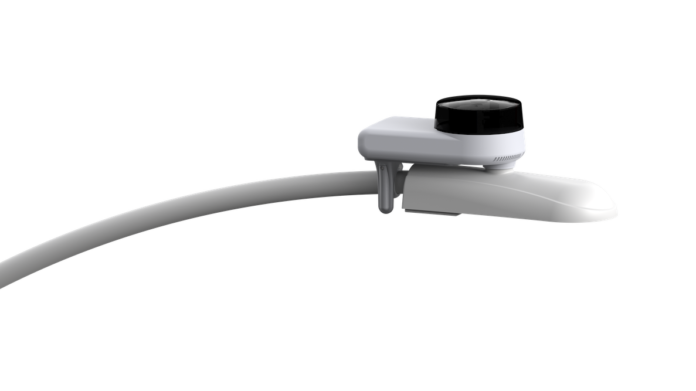
Streetlight-mounted repeaters will create 5G building surge
Infrastructure design creatives Ubicquia and radio specialist Movandi have created an ‘infrastructure light’ mmWave unit that could save the mobile network operators millions of Euros. The invention is a 5G repeater that plugs into a streetlight’s photocell socket in minutes rather than the multiple man hours normally needed by broadcasting units. “In our meetings with service providers, they consistently ask for solutions to quickly and affordably put to work the billions of dollars they have invested in 5G mmWave spectrum,” said Maryam Rofougaran, CEO and co-founder of Movandi.
Could this save mmWave?
A research paper quantifies the saving in one example as $13 million on the total cost of ownership (TCO) of a section of a 5G network. “An [archetypal] small city needs 950 new 5G mmWave radio base stations (gNBs) for full coverage,” said analyst Joe Madden at Mobile Experts. The study, Streetlight Mounted mmWave Radios Transform Coverage Economics, found that using 100 streetlight-mounted gNBs and 850 repeaters can cut 10-year TCO by over $13 million, roughly 35%. “It’s also $89 million cheaper than a gNB only utility pole configuration. Our conclusion is that streetlight deployment is absolutely the way to go,” said Madden.
Handles Corners
The light mounted radios solve a flexibility problem by giving a network backbone the option to bend round turns and reach into inaccessible corners. While mmWave technology creates up to 100 times more capacity than current 5G mid-band spectrum, its propagation distance is typically less than 250 meters, and it does not turn corners or penetrate buildings. As a result, 5G mmWave networks will require many more sites than mid-band networks. This creates challenging deployment economics, especially in less populated areas. With the mmWave Streetlight Repeater, Ubicquia and Movadi claim they have changed that.
Instant installation
Installations of 5G mmWave repeaters are much less complicated and they are designed not to frighten locals with the usual ugly aesthetics of telco equipment. The resulting lack of opposition could be another factor that allows 5G networks to expand rapidly. The lightweight technology can help operators offer Fixed Wireless Access more rapidly at a lower total cost of ownership, the partners claim. The repeaters blend with any vendors’ Radio Access Network (RAN) and emerging O-RAN platforms to solve 5G mmWave deployment challenges across all global spectrum bands, they claim.
5G Ubiqity
The Ubicquia mmWave Streetlight Repeater with Movandi 5G RF technologies probably probably needs a catchier name. However, it can use existing streetlights and their persistent power, at 50 meter spacing to 10 meter heights. It meets utility power, protection, metering, weight and wind loading requirements, say the partners. It can redirect its signals around obstacles and locks onto host RAN signals automatically to ensure repeater-to-repeater connectivity without the need for fibre connectivity to the core network
Enlightening
The repeaters will integrate with all major RAN/Open RAN technologies, including Ericsson, Huawei, Nokia and Samsung and supports all global mmWave spectrum bands. Original features include Movandi’s own mmWave 5G RF technology and reference design platforms including RF semiconductors, custom phase array antenna modules, algorithms and software including cloud APIs for management, control and artificial intelligence/machine learning data analytics.
“The only way mobile operators can deliver on the promise of mmWave 5G in any reasonable period is to use existing streetlight infrastructure,” said Ian Aaron, CEO of Ubicquia, “our is to help mobile operators deliver 5G mmWave services to dense urban areas and make 5G mmWave services a reality for cities of all sizes.”


